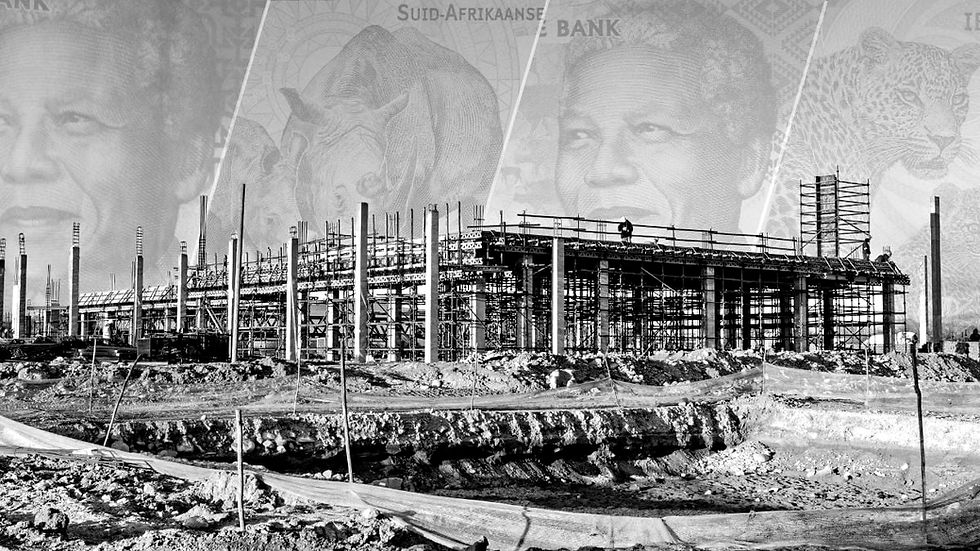Best Practices for Stakeholder Engagement in Township and Rural Property Development: A Focus on Community Development Trusts.
- Cuma Dube

- Mar 2
- 3 min read
Stakeholder engagement is a cornerstone of successful property development, particularly in South Africa’s township and rural areas where community interests are deeply intertwined with developmental outcomes. In these contexts, Community Development Trusts (CDTs) often play a critical role as representatives of local communities, ensuring that their voices are heard and their needs are met. This blog explores best practices for engaging stakeholders in township and rural property development, with a specific focus on managing relationships with CDTs.

Property development is inherently a multi-stakeholder process involving developers, government entities, investors, consultants, and local communities. In rural and township projects, the dynamics are further complicated by historical inequalities, land tenure complexities, and socio-economic disparities.
CDTs often act as intermediaries between developers and rural communities. They are tasked with safeguarding community interests by ensuring that developments align with local needs while delivering tangible benefits such as job creation, infrastructure improvements, and long-term economic upliftment.
Best Practices for Stakeholder Engagements.
Early and Inclusive Engagement:
Engaging stakeholders early in the development process is critical to building trust and fostering collaboration. Developers should:
Identify all key stakeholders, including community leaders, traditional authorities, local government officials, and CDTs.
Conduct initial consultations to understand community priorities, concerns, and expectations.
Use participatory tools such as workshops or focus groups to ensure that all voices are heard.
Early engagement not only mitigates the risk of opposition but also helps developers tailor their projects to meet local needs effectively.
Transparent Communication:
Transparency is essential for building trust between developers and communities. Best practices include:
Sharing detailed project plans, timelines, and potential impacts with all stakeholders.
Regularly updating stakeholders on project progress through newsletters, meetings, or digital platforms.
Being honest about challenges or delays to manage expectations effectively.
For example, in the development of the Dan City Mall in Limpopo, transparent communication with local stakeholders helped address concerns about land use and ensured community buy-in.
Collaborative Decision-Making:
Collaboration fosters a sense of ownership among stakeholders. Developers should:
Involve CDTs in key decision-making processes such as development plans or infrastructure design.
Establish joint committees comprising representatives from the developer’s team and the CDT to provide regular feedback on project progress and implementation challenges.
Use Memorandums of Understanding (MOUs) to formalise roles and responsibilities.
Collaborative approaches not only enhance project outcomes but also reduce the likelihood of disputes or delays.
Capacity Building for CDTs:
Many CDTs lack the technical expertise required to engage effectively in complex property development processes. Developers can support capacity building by:
Providing training on topics such as financial management, legal frameworks, or project planning.
Offering resources such as access to consultants or legal advisors to strengthen the CDT’s ability to represent community interests.
Ensuring that CDT members understand their role in balancing community needs with commercial realities.
Capacity building empowers CDTs to act as informed advocates for their communities while facilitating smoother interactions with developers.
Long-Term Community Benefits:
Stakeholder engagement should not end when construction is completed. Developers must ensure that projects deliver long-term benefits by:
Creating employment opportunities during both construction and operational phases.
Allocating a portion of project profits to community development initiatives such as schools or healthcare facilities.
Establishing mechanisms for ongoing dialogue between developers and communities to address post-construction issues.
For instance, some rural retail developments have implemented profit-sharing models where a percentage of rental income is reinvested into local infrastructure projects.
While CDTs are invaluable partners in rural property development, managing relationships with them can be challenging due to Disagreements among CDT members can delay decision-making processes. Many CDTs operate on tight budgets with minimal administrative support. Historical exploitation has made some communities wary of developers’ intentions.
Stakeholder engagement is not just a regulatory requirement—it is a critical success factor for township and rural property developments in South Africa. By adopting best practices such as early engagement, transparent communication, collaborative decision-making, capacity building for CDTs, and ensuring long-term community benefits, developers can create projects that are both commercially viable and socially impactful.
As South Africa continues its journey toward inclusive economic growth in 2025 and beyond, fostering meaningful partnerships with CDTs will remain essential for unlocking the potential of rural property markets while addressing historical inequities.



